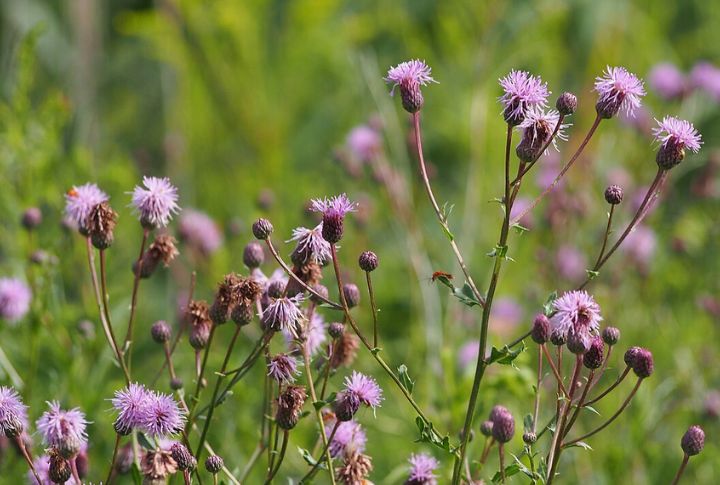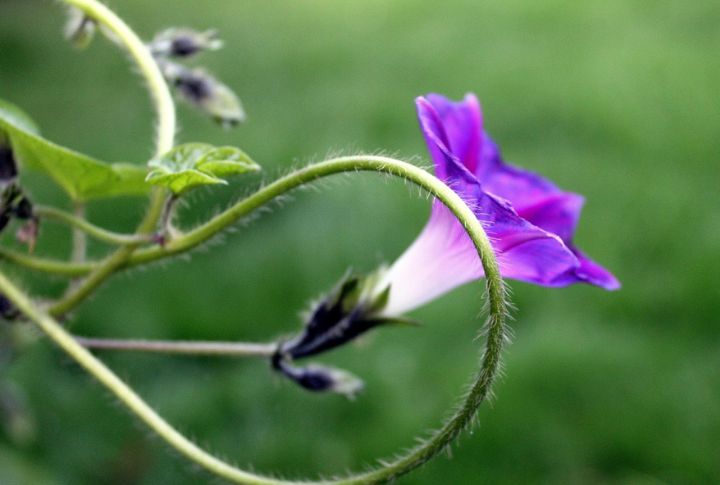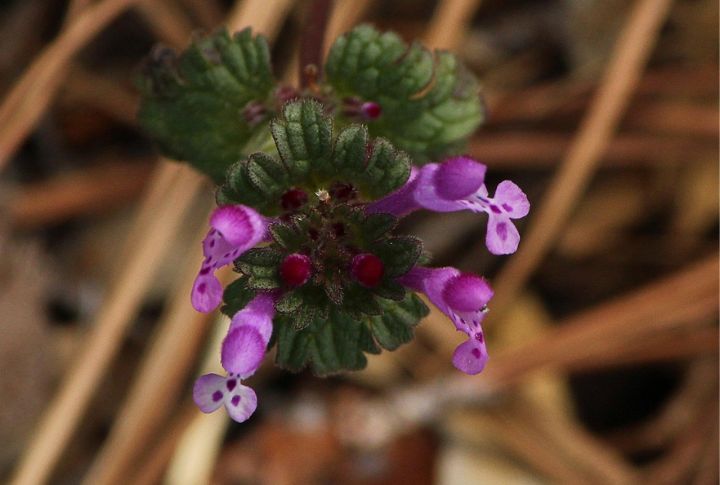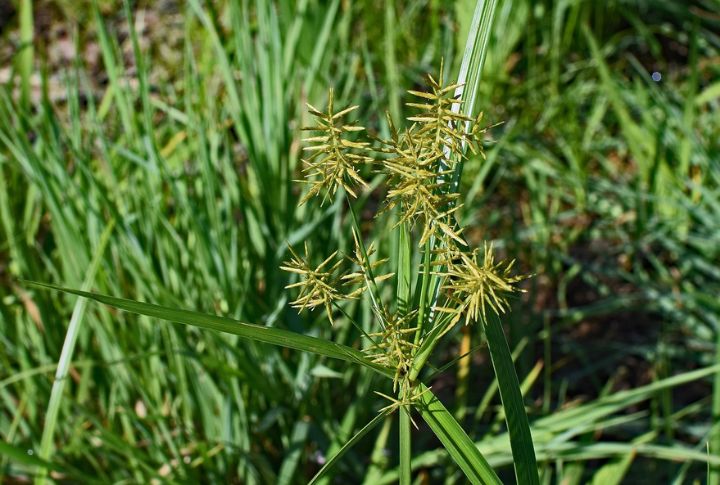
Most folks assume they can spot a weed a mile away—until the flowerbed starts looking like a wild mess. Weeds are sneaky. They love bare patches and compacted soil, and they don’t need an invite. Luckily, once you know their tricks, you’ll quit yanking harmless plants and start dealing with the real troublemakers. Here are 20 weeds every homeowner should know before they take over the whole lawn.
Dandelion

Recognizable by its yellow blooms and jagged leaves, the dandelion invades lawns with deep taproots that make removal difficult. They thrive in compacted or disturbed soil. Their seeds float for miles, and every part is edible—roots, leaves, and flowers used in teas, salads, and even herbal medicine.
Crabgrass

Crabgrass quickly takes over bare lawn patches, spreading low with spidery arms and producing thousands of seeds. It grows in hot weather and thrives in weak turf. Plus, it can germinate within days. Drought conditions can cause it to turn purple.
Chickweed

This cool-weather weed grows fast and sends out roots that help it form thick ground cover. Moist spots with shade suit it best. The leaves are soft enough to eat, and the flowers tuck in after dark. Chickens enjoy nibbling it, which is how it got its name.
Creeping Charlie

Often found in shady lawns, this fast-spreading weed sends runners that root wherever they touch the soil. It’s hard to remove and smells minty when crushed. Historically, it was used to flavor beer before hops were introduced. Its small purple flowers make it easy to mistake for ground cover.
Canada Thistle

Armed with spiny leaves and deep roots, Canada thistle spreads aggressively by both seed and underground stems. Just one plant can release over 5,000 seeds. Though invasive and hard to control, its purple blooms attract pollinators, making it a double-edged presence in lawns.
Spotted Spurge

This creeping plant often hugs sunny sidewalks and driveway edges, thriving in compacted soil. Its reddish stems and dense growth make it hard to miss. When snapped, it releases a white sap that may irritate skin and is toxic to pets, making early removal especially important.
Plantain Weed

Usually found in high-traffic areas, plantain thrives in compacted soil where grass struggles to grow. Its broad leaves and upright seed spikes are easy to spot. The seeds resemble psyllium, and the leaves have long been used as a remedy for insect bites. Dense growth helps it crowd out healthy turf.
Bindweed

Vines spiral around flowers, fences, and other plants, choking growth. Roots can extend 20 feet underground, making removal a frustrating process. Though related to morning glories and visually appealing, bindweed spreads relentlessly. Once established, even a small root fragment can regenerate the entire plant.
Henbit

Square stems, scalloped leaves, and early purple blooms distinguish henbit. Found in poorly drained areas, it often takes over in spring. Bees appreciate its flowers, and the leaves are edible raw. Despite belonging to the mint family, it lacks a strong scent.
Nutsedge

Nutsedge stands taller than turf and grows faster. Its stiff, triangular stems and yellow-green blades reveal the difference. Underground tubers, called nutlets, form dense colonies. The ancient Egyptians used this plant for both fragrance oils and medicinal purposes.
Ground Ivy

Ground ivy creeps through lawns using trailing stems that root along the way, making it tough to control. Its scalloped, glossy leaves and small purple flowers help it hide among grass. When crushed, the leaves release a minty scent. Long ago, this plant was even used to flavor beer.
Black Medic

Black medic forms a low, spreading mat from a central crown, thriving in compacted or nutrient-poor soil. Its small yellow flowers eventually turn into coiled black seedpods. Though it looks like clover, it’s actually part of the alfalfa branch of the legume family and often signals nitrogen-starved or stressed turf.
Bittercress

Those small white flowers in your potted plant might be bittercress, a fast-spreading weed common in cool, damp soil. It catapults its seeds when pods mature, making removal tricky. It’s edible and peppery, but most gardeners know it for how quickly it appears and how far it flings its next generation.
Purslane

Succulent stems and reddish branches mark purslane’s spread across garden beds and pavement. Even a stem fragment can regrow. It has omega-3 fatty acids and is used in many global dishes. Often found on sidewalks or gravel, it loves hot, sunny spaces.
Pigweed

Once valued by ancient cultures for both grain and greens, pigweed now frustrates modern farmers with its resilience. It grows tall and bushy, with broad leaves and a tendency to outcompete crops. A single plant can generate more than 100,000 seeds, and many herbicides fail to keep it under control.
Quackgrass

Fast horizontal spread through rhizomes makes quackgrass a persistent invader. It pushes through garden beds and lawns with coarse, bluish blades. Auricles on the stalk clasp surrounding stems. Historically used in herbal medicine, it’s also known as couch grass in some regions.
Wild Violet

This low-growing plant hides its persistence behind purple petals and heart-shaped leaves. Wild violet forms thick colonies using underground rhizomes and self-pollinating flowers. While edible and even favored in salads, its aggressive spread surprises many gardeners. In Illinois, it’s officially recognized as the state flower.
Mugwort

Growing near disturbed areas like fences and field borders, mugwort spreads through rhizomes and quickly overtakes nearby plants. Its tall growth and deeply cut leaves are easy to spot. Known for its sage-scented foliage, this plant was once valued for herbal remedies and traditional brewing.
Oxalis

Clover-shaped leaves and bright yellow blooms make oxalis easy to spot along sunny garden edges. It spreads underground and flings seeds through bursting pods. Its lemony taste comes from oxalic acid in the leaves. Despite its small size, it’s a determined spreader across cracks and flower beds.
Foxtail

This fast-spreading grass prefers compacted ground, where it crowds out turf with ease. Its brush-like seeds attach to fur and fabric, hitching rides unnoticed. For pets, contact with foxtail can be dangerous—those sharp seed heads often lodge in noses, ears, or paws during dry summer months.

